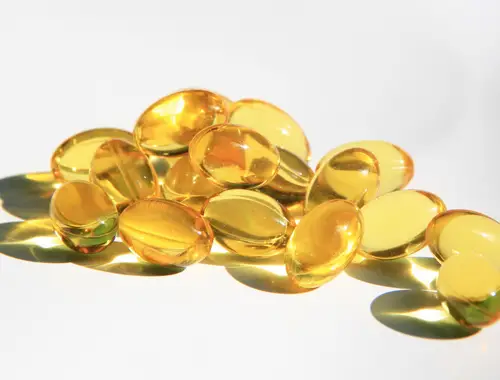
What is fish oil?
Fish oil is an oil sourced from fish byproducts from fish meals and fish tissues especially fishes with a high-fat content like sardines, anchovies, eels, and herrings. It is made up of long-chain polyunsaturated fatty acids and is usually present as glycerides. Fish oil as a source of dietary lipids accounts for about 2% of global fats and oil consumption for nutrition and health.
Fish oils are a natural source of long-chain polyunsaturated omega-3 fatty acids especially, eicosapentaenoic acid (EPA) and docosahexaenoic acid (DHA) which are known to be vital in anti-inflammatory processes in the body and the viscosity of cell membranes. In addition to the fatty acid content, other substances like amines, wax esters, cholesterol, and its esters, and phospholipids.
Health-wise, the consumption of fish oil is beneficial as it contributes to the low incidence of cardiovascular diseases, proper neural development, reduces the risk of developing metabolic disorders as well as results in improved insulin sensitivity in children suffering from insulin resistance which is a precursor to the development of type 2 diabetes.
Due to the nutritional and health benefits derived from the omega-3 fatty acids- eicosapentaenoic acid (EPA) and docosahexaenoic acid (DHA), nutraceuticals and pharmaceuticals are going out of their way to ensure accessibility through fortification of foods with fish oil and encapsulation of fish oils as supplements.
However, foods containing fish oil but lacking natural antioxidants are susceptible to oxidation (when they are exposed to heat, light, or oxygen due to the presence of unsaturated fatty acids-EPA and DHA) which in turn affects the smell and taste of the oil. As a result of these negative impacts of oxidation, fortifying the food products using the method of direct addition of bulk fish oil or turning the fish oil into an emulsion, or microencapsulating the fish oil has been an effective method of improving the oxidative stability of fish oil.

What is Omega 3?
Omega-3 represents the chemical structure of fatty acids which can be obtained from certain food of either plant or animal origin. Omega-3 differs in terms of length (short-chain or long-chain) and in their chemical structure (it may possess a mono, double, or multiple/poly bonds) form of short-chain or long-chain fatty acids.
The shortest chain omega-3 fatty acid known as alpha-linolenic acid (α-linolenic acid) can be obtained from leafy vegetables and plant oil processed from walnuts, canola seeds, soybeans, flax seeds, and mustard seeds.
The long-chain omega-3 fatty acids especially, eicosapentaenoic acid (EPA) and docosahexaenoic acid (DHA) can be obtained from fish and fish byproducts as well as other marine foods and they aid in the treatment or prevention of cardiovascular diseases by stabilizing the rhythm of the heart and reducing blood cloth, metabolic diseases like autoimmune disorder and diabetes mellitus, it also reduces the chances of developing ulcerative colitis as well as, the prevention of bone loss during aging.
It is important to highlight that omega-3 fatty acid α-linolenic acid can be used as a substitute for eicosapentaenoic acid (EPA) either directly or after partial synthesis (although, only about 5% is converted to eicosapentaenoic acid).
As essential as the omega-3 fatty acids are to the body, the body cannot produce its own omega-3 fatty acid. Hence, the need for the consumption of foods rich in omega-3 like fish with high-fat content for example, sardines, and mackerels, eating other marine food like shrimp, or the encapsulated supplements.
What is omega 6?
Omega-6 is a polyunsaturated fatty acid obtained from certain plant and animal food sources, like peanuts, corn, cotton seeds, dairy products, meat, and eggs.
Omega-6 fatty acids can be in the form of arachidonic (AA) or linoleic acids (LA) and their high level is correlated with an increased incidence of oxidative stress, inflammation, and heart disease. Furthermore, habitual consumption of foods with a very high ratio of omega-6 and a high ratio of omega-3 also predisposes one to the development of cardiovascular diseases, auto-immune diseases, or cancer. Whereas a dietary lifestyle that is comprised of a decreased amount of omega-6 (linoleic acid) increases the bioavailability of omega-3 fatty acids (lowers the tissue concentration of omega-6) in turn, reduces disease risk.
What is omega 9?
Omega-9 represents monounsaturated fatty acids derived from both plant and animal sources. There are different types of omega-9 fatty acids and oleic acid is one of them. It is widely available in vegetable oils like olive oil, sesame seed oil, canola oil, and flaxseed oil. Another form of omega-9 fatty acid known as nervonic acid can be obtained from foods like king salmon, yellow mustard seeds, and flaxseeds.
Unlike omega-3-6, omega-9 fatty acids are not essential because the human body is capable of synthesizing them. Different omega-9 fatty acids have different medical implications including a decrease in low-density lipoprotein (LDL) cholesterol, help in modulating inflammatory disorders, improved lipid profile, and decrease in obesity-related risk factors for cardiovascular diseases. However, elaidic acid- a trans-isomer of oleic acid is a common trans-fatty acid widely used by industries in food manufacturing and has been linked to heart disease.
Similarities between fish oil and omega 3-6-9
There are no documented similarities between fish oil and omega-3, omega-6, and omega-9 fatty acids. This is because fish oil is just a major carrier of the essential long-chain polyunsaturated omega-3 fatty acids (eicosapentaenoic acid and docosahexaenoic acid),
Similarities exist between the fatty acids in terms of their saturation. Omega-3-6-9 are all unsaturated fatty acids.
In terms of sources, dietary omega-3 (alpha-linolenic acid), omega-6 (linoleic acid), and omega-9 can be obtained from plant oils especially, from seeds and nuts.
Frequently Asked Questions
Is omega-3-6-9 the same as fish oil?
No, omega-3, 6, and 9 are not the same as fish oil but, omega-3 (eicosapentaenoic acid (EPA) and docosahexaenoic acid (DHA), and 9 (nervonic acid) can be obtained from fish
What is the difference between omega-3-6-9 and fish oil?
Omega-3, 6, and 9 are unsaturated fatty acids whereas fish oil is a dietary source of some fatty acids.
Is omega-3 the same as fish oil?
No, omega-3 is not the same as fish oil. Instead, fish oil is a major source of omega-3 fatty acids.
Is omega-3 the same as Cod-liver oil?
No, omega-3 is not the same as Cod-liver oil. Omega-3 can be obtained from Cod-liver oil in the form of a supplement produced from Cod-liver or it can be obtained through the consumption of Cod fish.
What does omega-3-6-9 do for the body?
Omega-3-6-9 fatty acids are fatty acids that are majorly beneficial to the treatment and or prevention of some chronic diseases thereby contributing to the improvement of health.











Leave a Reply